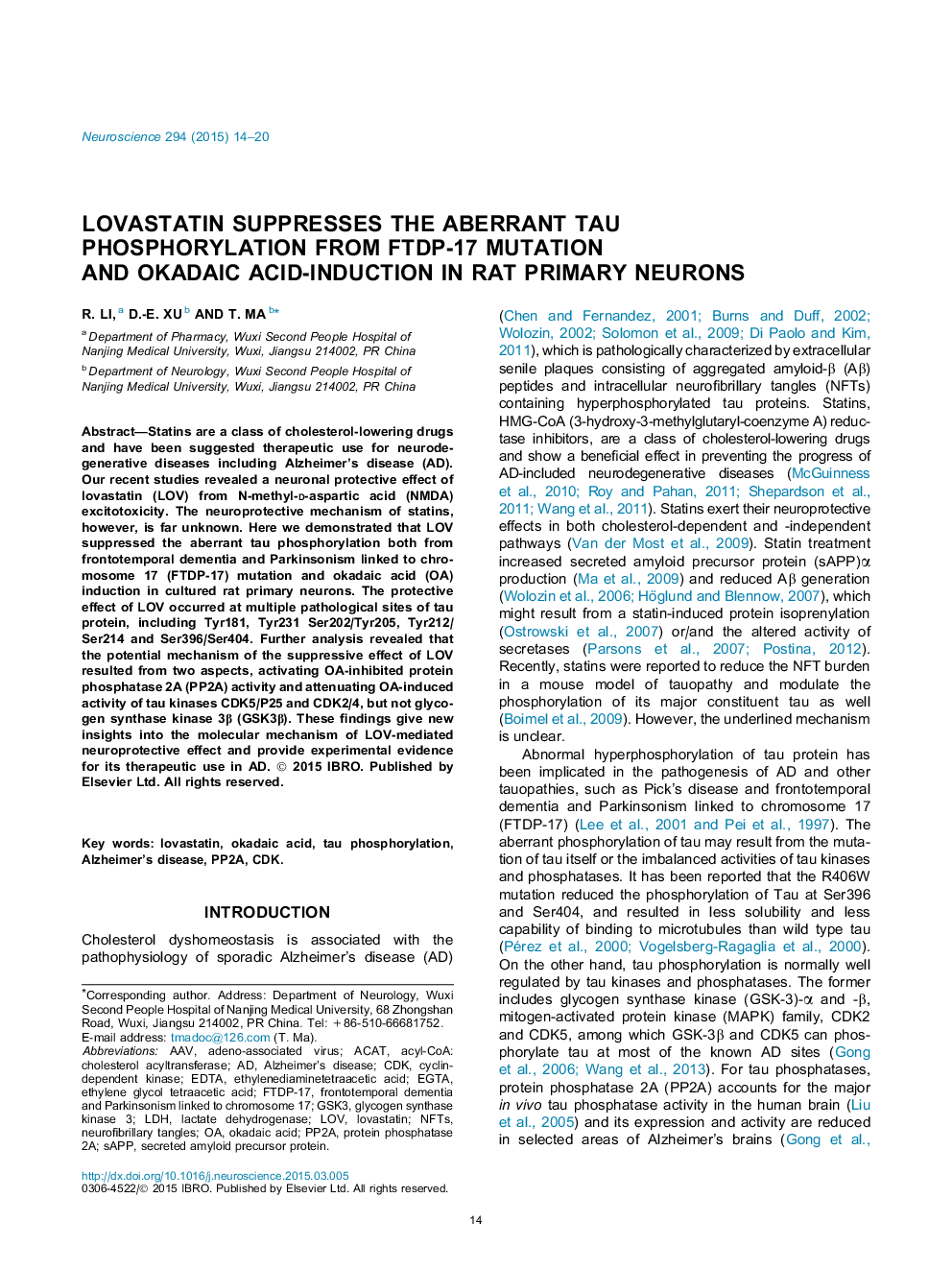| Article ID | Journal | Published Year | Pages | File Type |
|---|---|---|---|---|
| 6272358 | Neuroscience | 2015 | 7 Pages |
â¢Lovastatin suppresses the phosphorylation of FTDP-17 mutant tau in rat primary neurons.â¢Lovastatin attenuates OA-induced tau phosphorylation in rat primary neurons.â¢The protective effect of lovastatin mediated by both activating PP2A activity and inhibiting activity of tau kinases.
Statins are a class of cholesterol-lowering drugs and have been suggested therapeutic use for neurodegenerative diseases including Alzheimer's disease (AD). Our recent studies revealed a neuronal protective effect of lovastatin (LOV) from N-methyl-d-aspartic acid (NMDA) excitotoxicity. The neuroprotective mechanism of statins, however, is far unknown. Here we demonstrated that LOV suppressed the aberrant tau phosphorylation both from frontotemporal dementia and Parkinsonism linked to chromosome 17 (FTDP-17) mutation and okadaic acid (OA) induction in cultured rat primary neurons. The protective effect of LOV occurred at multiple pathological sites of tau protein, including Tyr181, Tyr231 Ser202/Tyr205, Tyr212/Ser214 and Ser396/Ser404. Further analysis revealed that the potential mechanism of the suppressive effect of LOV resulted from two aspects, activating OA-inhibited protein phosphatase 2A (PP2A) activity and attenuating OA-induced activity of tau kinases CDK5/P25 and CDK2/4, but not glycogen synthase kinase 3β (GSK3β). These findings give new insights into the molecular mechanism of LOV-mediated neuroprotective effect and provide experimental evidence for its therapeutic use in AD.
